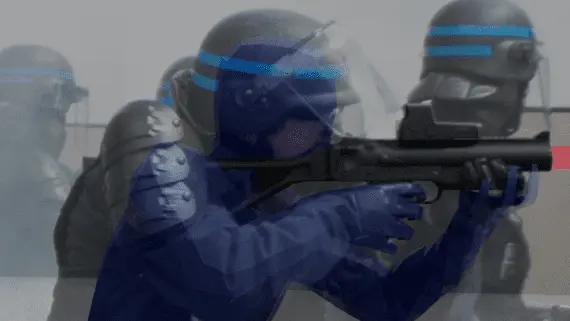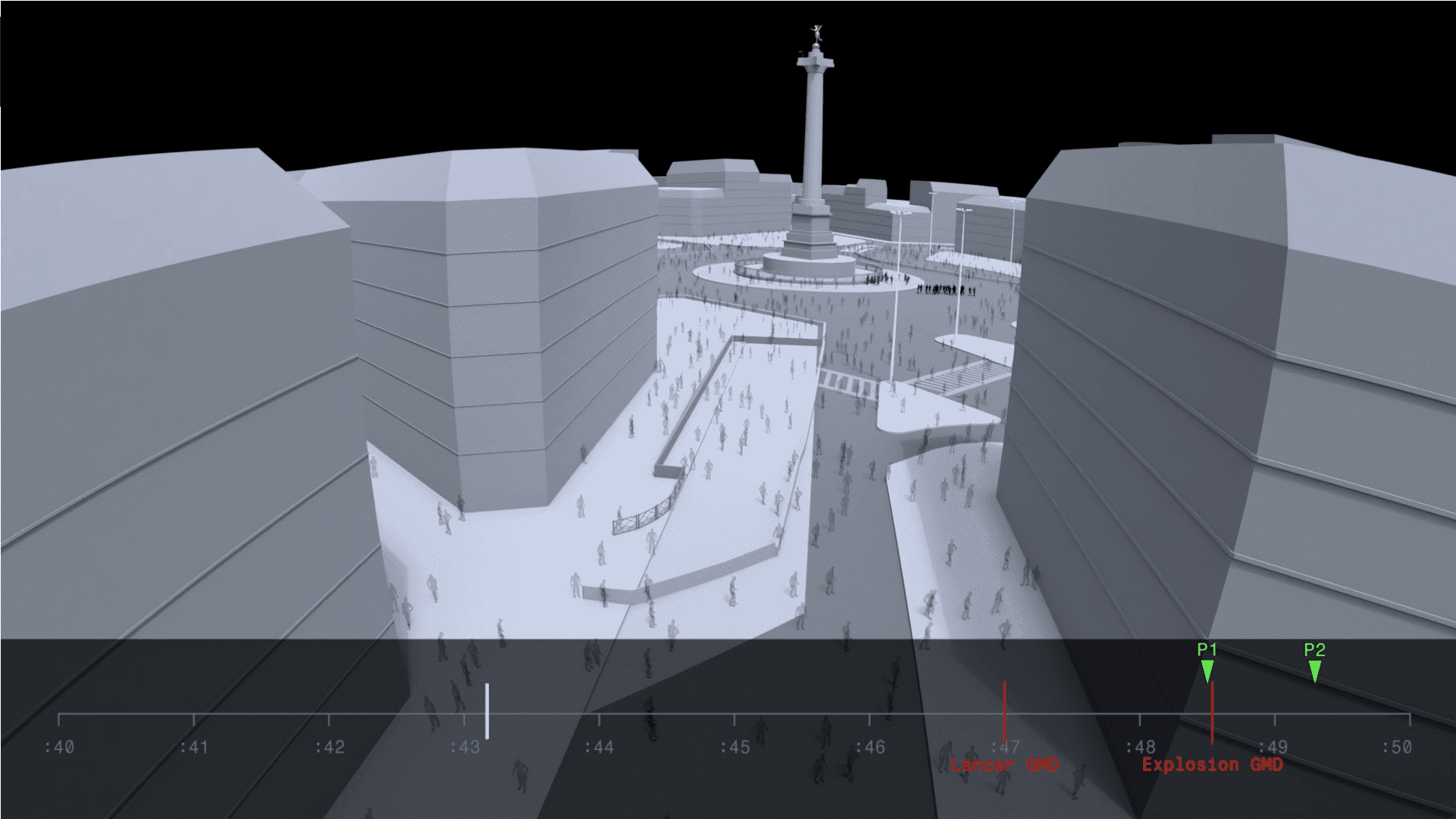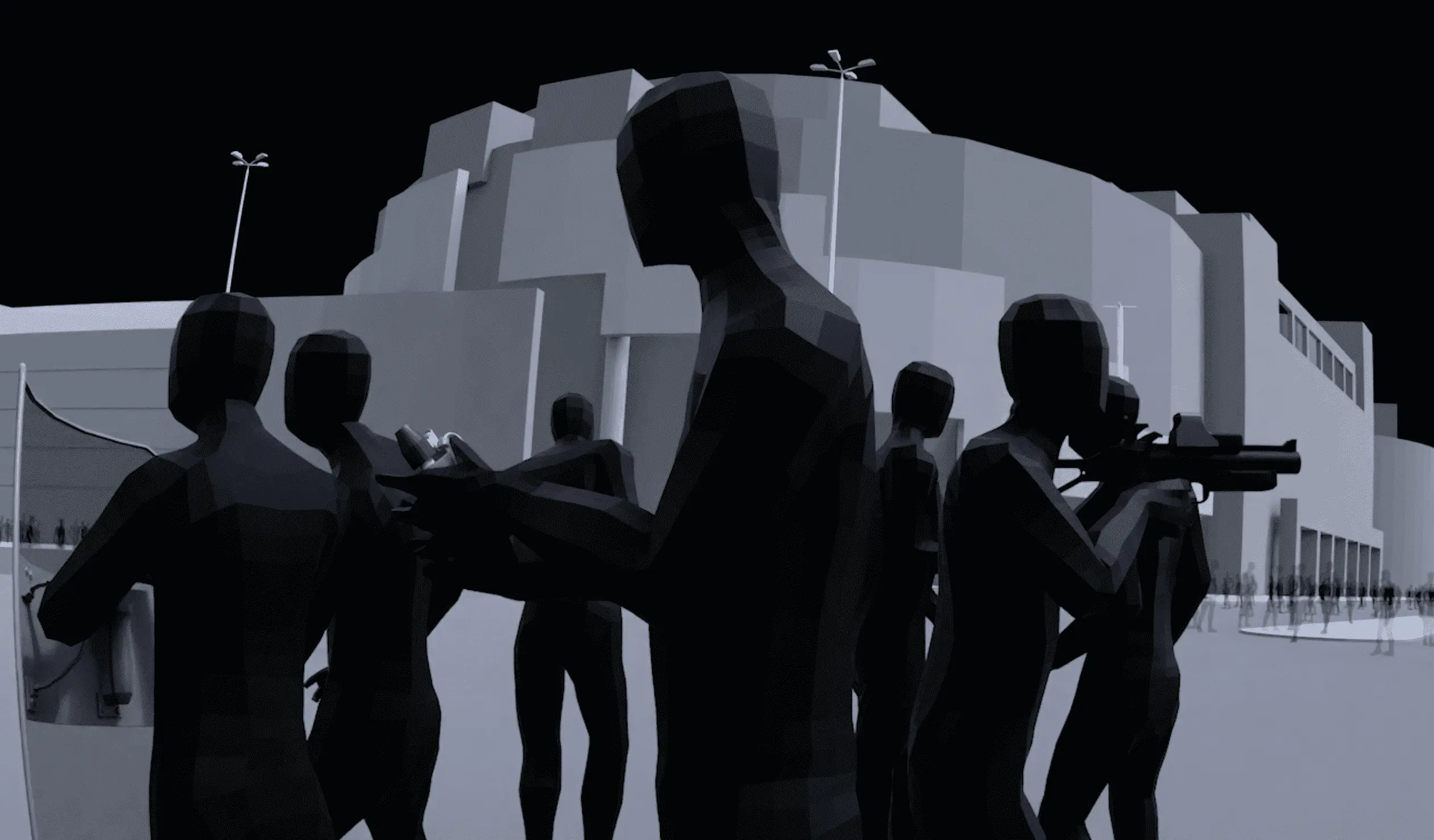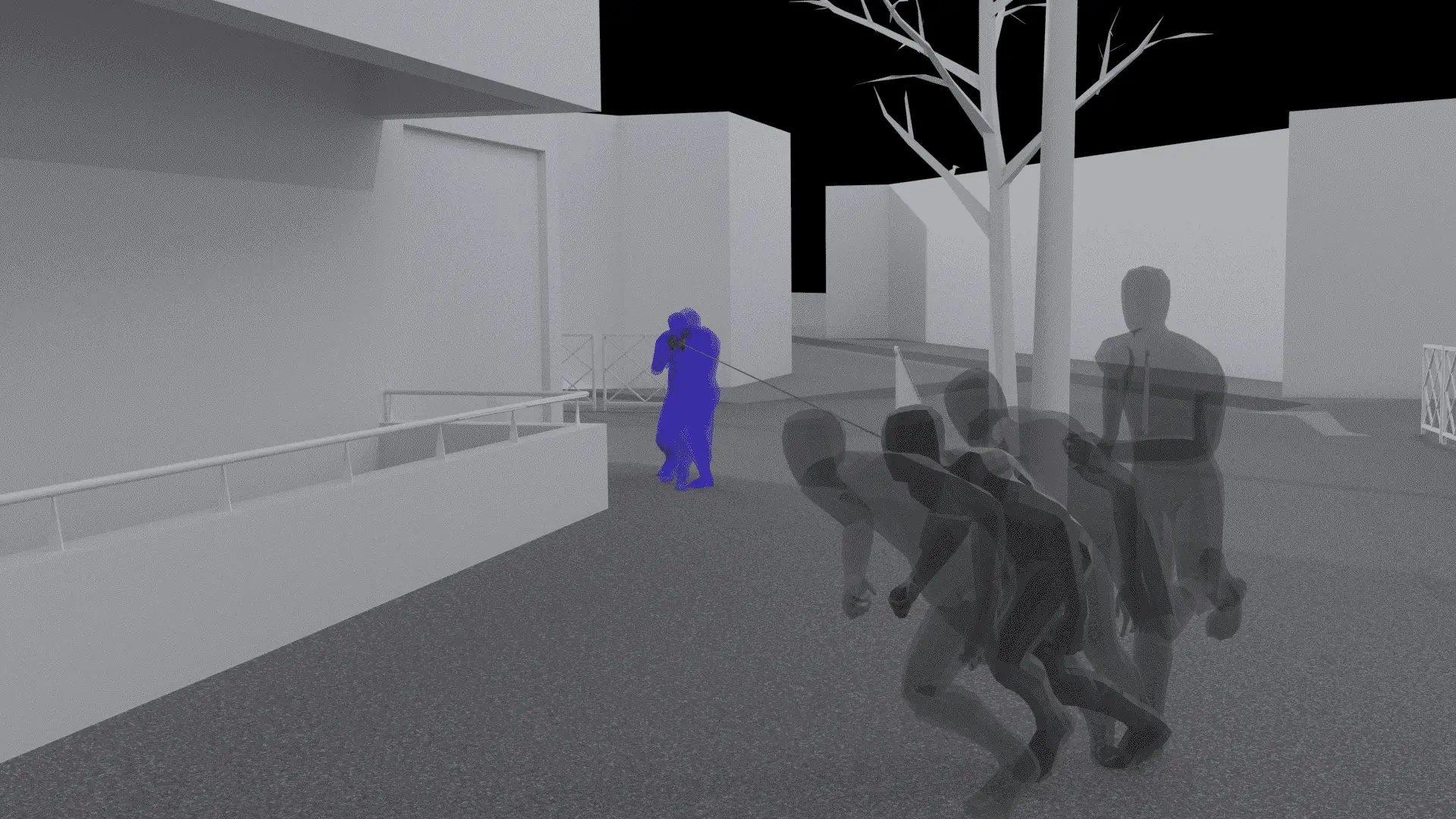LBD shooting of Jean-François Martin: the policeman identified by 3D-modeling
In 2016, Jean-François Martin’s eye was mutilated by an LBD shot during a demonstration against the ‘Loi Travail’ in Rennes. While initially dismissed, the case was reopened in 2021, thanks to an INDEX report that successfully identified the police officer who fired the shot, who was then referred to a criminal court. The French courts have since reversed this decision and dismissed, again, the case. Today, we are releasing the contents of our report.
Date of incident
28.04.2016
Location
Rennes (35), France
Consequences
Mutilation
Keywords
This 28th of April, 2016, in the early afternoon, several thousand demonstrators are marching against the ‘Loi Travail’ in the city center of the French city of Rennes. Near the quays of the river Vilaine, tensions erupt between demonstrators and police. The latter use tear gas and fire several LBD shots (‘lanceur de balle de défense’). At 1:09 p.m., one of these shots crosses the river and hits a man in the face. Jean-François Martin, a 20-year-old student, falls to the ground. The injury will result in the permanent loss of his left eye.
The investigation carried out following the victim’s complaint made it possible to establish that only two of the police officers present on the scene at the time of the events carried an LBD-capable weapon. But nothing in that investigation specifies which of the two officers is responsible for the shot which caused the injury. Four years after the events, on May 29, 2020, the judge in charge of the investigation dismissed the case, on the grounds that it had not been «possible to identify the authors of the LBD shot which hit Jean-Francois Martin». The latter immediately appealed the decision.
In April 2021, as part of this appeal procedure, Jean-François Martin’s lawyer, Arié Alimi, contacted INDEX to work on a counter-investigation. Using the numerous photos and videos taken at the time of the events, the goal was to examine the LBD shots identifiable in the images and, as far as possible, to determine which of the two police officers carrying LBDs was responsible for Jean-François Martin’s injury.
3D reconstitution of the shots trajectories
To carry out this work, we started out with an in-depth online search (OSINT), in order to enrich the visual documentation available in the judicial file. At the end of this research, the documentation for this counter-investigation included seven videos of witnesses, about twenty photographs taken by journalists, as well as a number of still-frames taken from a surveillance video recorder by a helicopter of the Gendarmerie.
We proceeded to synchronize these images, using as a reference time the timestamp recorded on the CCTV images of the helicopter. From this synchronization, the detailed analysis of the images captured around 1:09 p.m. – the time of Jean-François Martin’s injury – allowed us to identify five LBD shots compatible with the victim’s injury.

For each of these shots, thanks to the images available, we have reconstructed the precise position of the shooter and the barrel of his weapon in a 3D model of the scene of the incident, in order to model the trajectory of each shot.
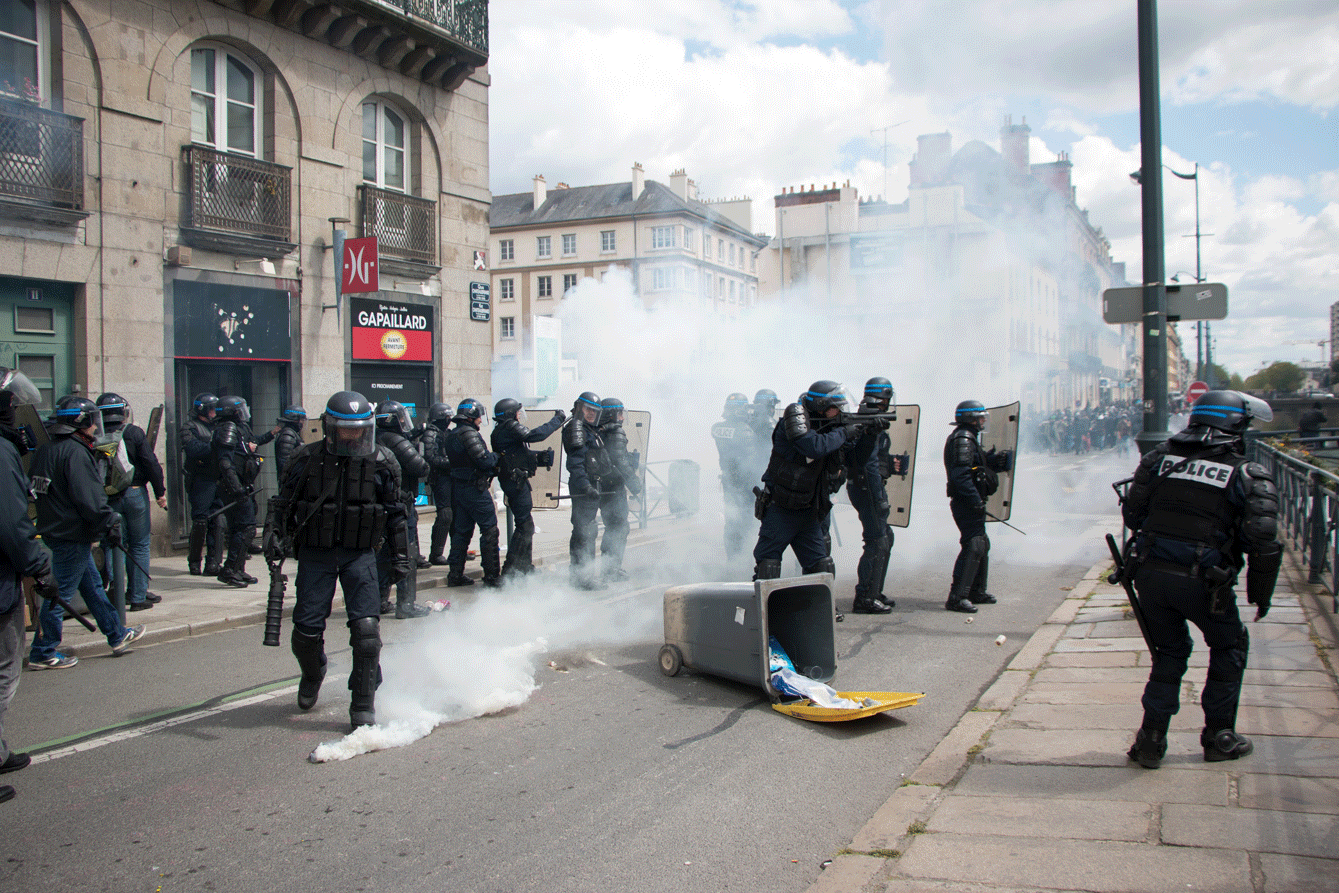
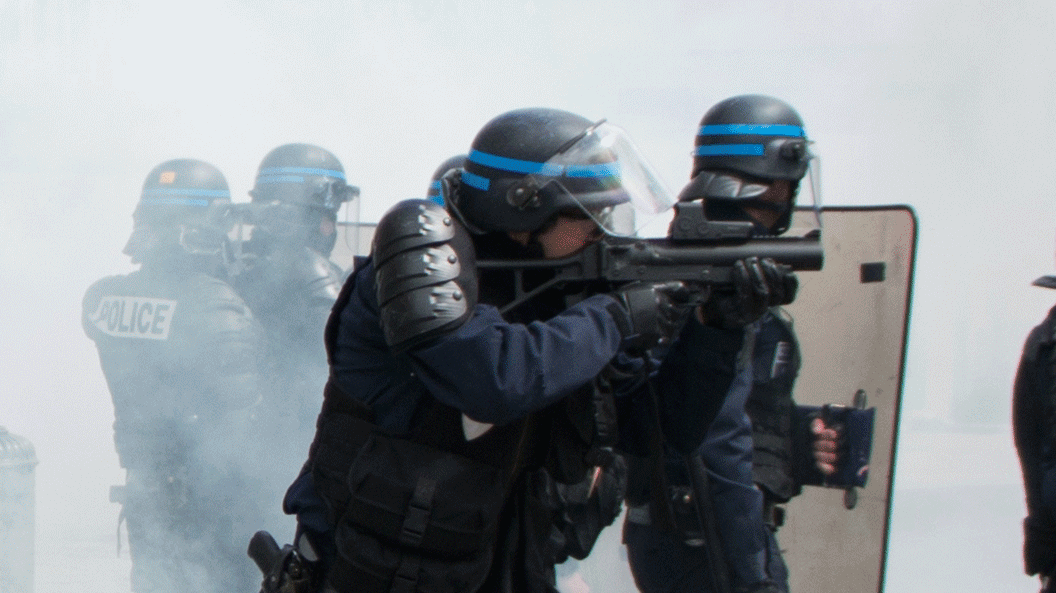
This work allowed us to place the five LBD shots in the 3D model of the scene of the incident. By examining them one by one, we found that only one of these shots crossed the area where Jean-François Martin was positioned at the time of his injury, while another traced close to this same area. These two shots were fired by the same policeman, Anthony P. As for the second policeman carrying an LBD, Nicolas P., the three shots he fired were directed towards the middle of the bridge, away from the area where Jean-François Martin was stationed.
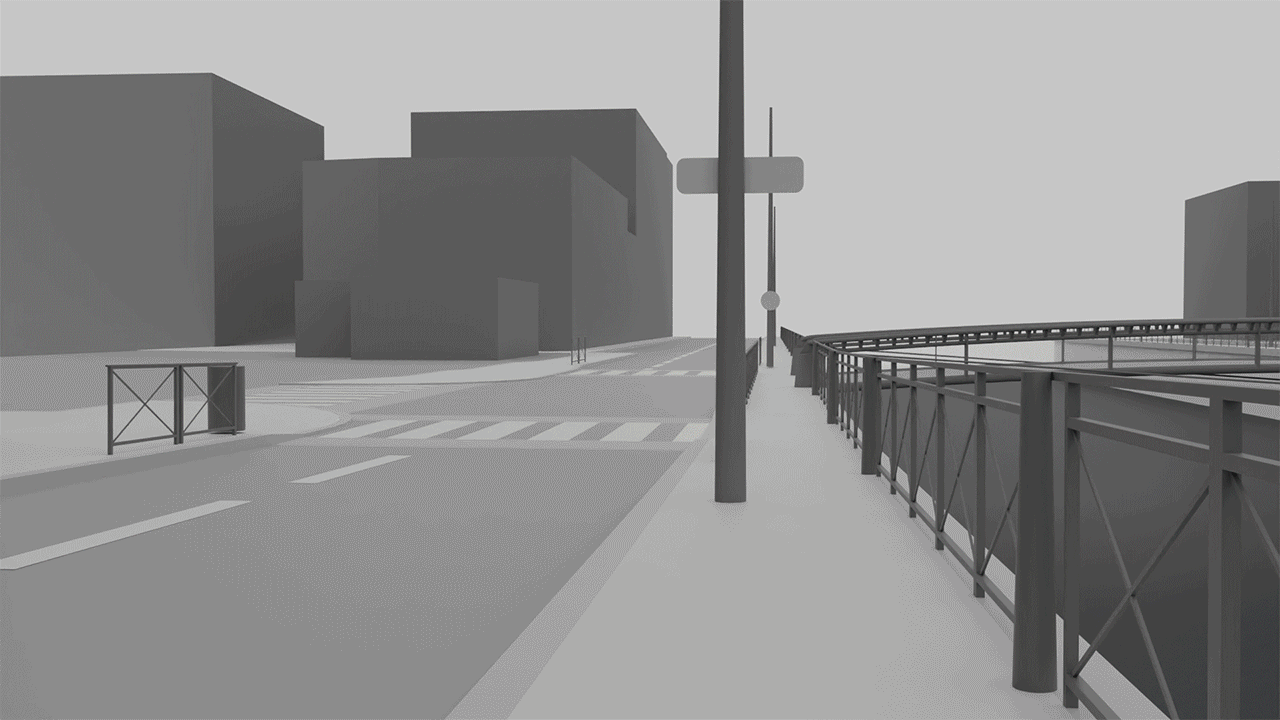
On August 31, 2021, INDEX submitted its report to Arié Alimi’s office. In the document’s conclusion, which details each of the stages of our analysis, we wrote:
«It is highly likely that police officer Antony P. fired the LBD shot that injured Mr. Martin.»
A short-lived judicial «victory»
Jean-François Martin’s appeal hearing in Rennes took place in September 2021. Mr Alimi remembers having «pleaded at length on the basis of the elements that had been revealed by the INDEX report», which he had filed as evidence, and were the only new elements in the case since its dismissal the year prior.
In November 2021 – a rare occurrence in a case of police violence – the Rennes investigation chamber overturned the dismissal pronounced in 2020 and sent the police officer Anthony P. before a criminal court – the same police officer identified by our report as the very likely author of the LBD shot that hit Jean-François Martin. The decision had a «a taste of victory», as Mr Martin said at the time.
However, the agent in question quickly appealed this decision to the Cour of Cassation, the highest court in the French judiciary. A few months later, the judgment of the Rennes Court of Appeal was quashed for a formal defect, the police officer not having been indicted before his referral to the criminal court. Six years after the facts, the case was then moved to a new court of appeal.
«We were sent back to the Angers investigation chamber and there everything was retried, unfortunately in the wrong way» said Mr Alimi. On February 22, 2023, the Angers Court of Appeal confirmed the dismissal order which had been pronounced in 2020. In the judgment which justifies its decision, the chamber considered that the use of the LBD by the police officers of the Rennes Intervention Section, concomitant with fireworks that were falling near their position, constituted «a proportionate use of strength».
Interactive visualization of the 3D reconstitution of the LBD shot having the highest probability of hitting Jean-François Martin. On the left, photograph at the moment of firing. On the right, the corresponding view in the 3D model. (INDEX)
The Angers Court’s decision is quite surprising. In his statements to the General Inspectorate of the National Police (IGPN), the internal police institution in charge of investigating its officers’ misbehavior, the police officer Anthony P. confirms having fired with his LBD in the direction of the opposite bank of the river, located at a distance of more than 40 metres – while the electronic sight which equipped its LBD is normally set for a distance of 25 metres. Moreover, his statements show that he was not targeting a particular individual, but rather that he shot at a whole group: «I shot at people who were throwing projectiles. I cannot offer specifics, they were all dressed the same, in black, with hoods, etc… I cannot tell you if I reached my targets,» one can read in his hearings with the investigators, that we were able to examine. These elements clearly contravene the LBD40’s engagement rules, which state that this weapon can only be used in a targeted manner, in the direction of «a violent and/or dangerous person». In other words, the dismissal order issued by the Angers Court of Appeal grants criminal unaccountability to a police officer whose illegal use of his LBD most likely resulted in the mutilation of a demonstrator.
The Court’s decision must be put in the perspective of the legal course of the Jean-François Martin case as a whole. The first court decision was pronounced four years after the victim’s complaint. It led to a dismissal, on the grounds that the responsible police officer could not be identified. If that had been the final outcome of the case, it would have been alike many other French police brutality cases. However, in this particular case, the independent counter-investigation work of INDEX – a civil society organization – in just three months, allowed the identification of the police officer responsible for Mr Martin’s injury and therefore the removal of the obstacle that had justified the Court’s refusal to prosecute the case further. The legal process then resumed and, after two years of additional proceedings, French justice finally reaffirmed that there was no need to prosecute, this time on completely different grounds. The matter was no longer the supposed impossibility of identifying the police officer responsible for the LBD shot (on this point, the Angers Court of Appeal did not cast any doubt on the exactitude of the INDEX report); this time, the Court motivated its decision to close the enquiry on the grounds that it considered the «use» of the LBD by the police officers involved as legitimate, given the hostility of which the police officers were allegedly the target at the time of the facts. While the reasons behind it have changed along the way, the courts decisions remained the same: that of not prosecuting the police officer.
At least 55 people lost an eye because of LBDs since 2005
Since the case of Jean-François Martin, the number of people who lost an eye due to an LBD shot during a demonstration has skyrocketed.
According to the unified census of the website violencespolicieres.fr, 29 people have lost an eye after being hit by an LBD shot in the face since November 2018, the majority of them during the repression of the Yellow vests movement.
The 2016 social movement against the ‘Loi Travail’ was a tipping point in the use of the LBD, which then went from the exception to the rule in crowd control law enforcement operations. Before that, the use of this weapon was for a long time confined mainly to working-class neighborhoods. Widely distributed within the Anti-Crime Brigades (BAC) by Interior Minister Nicolas Sarkozy since 2002, the LBD – also called Flash-Ball, named after one of the first implemented models – became, in 2016, «emblematic of the way of policing in the suburbs», according to sociologist Fabien Jobard.
There are numerous cases of serious injuries caused by the use of LBD in working-class neighborhoods. According to a report by the French NGO ACAT, between 2005 and March 2016, LBDs caused at least 39 serious injuries, «most of them to the face», indicates the report, which mentions 21 people «blinded or [having] lost the use of one eye», as well as a «man hit in the chest by a short-range shot [who] died in December 2010.» The collective Désarmons-les, whose census of victims mutilated by the police dates back to 2005, counts 24 people blinded by an LBD between 2005 and 2014. The use of LBDs in the suburbs hasn’t subdued because of its entry among the most frequently used weapons in crowd control operations since 2016, quite the opposite. The case of Adnane Nassih, who lost an eye to an LBD shot fired by a BAC agent in the parisian suburb of Brunoy in 2020, had been the subject of a video investigation by INDEX, in partnership with Libération.
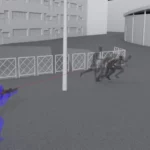
Absent official, public and precise data, the most complete data on injuries resulting from the use of weapons by the French police come from the various census initiatives led by civil society actors.
When we cross-reference the data from these sources, it appears that between 2005 and 2023, at least 55 people were mutilated by an LBD shot.
Our report
Team
| Investigation (2023) | Francesco Sebregondi Filippo Ortona Nadav Joffe |
| Report (2021) | Galdric Fleury Matthieu Vitse Antoine Fontaine Francesco Sebregondi |

